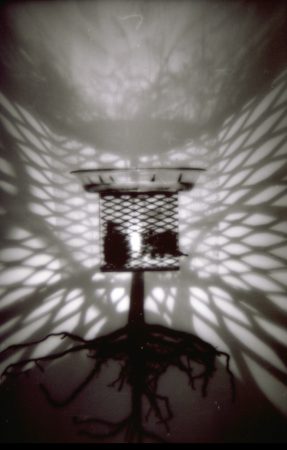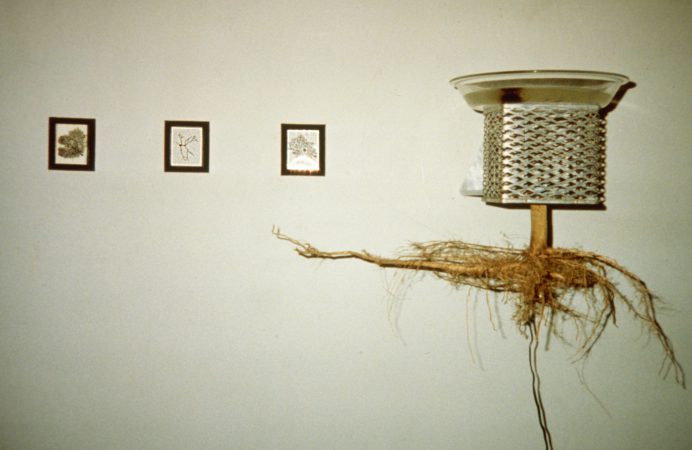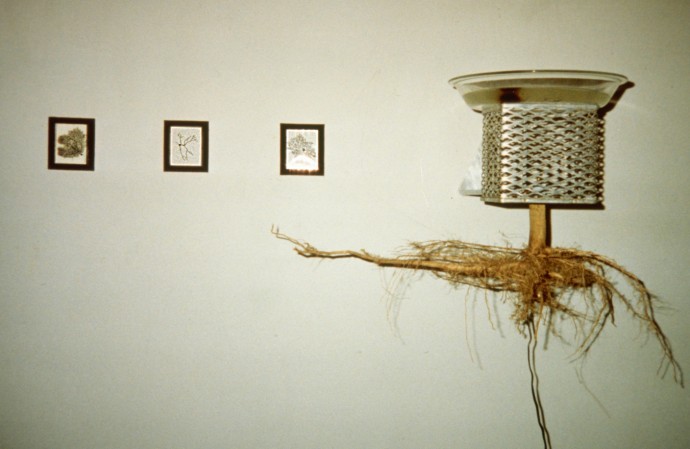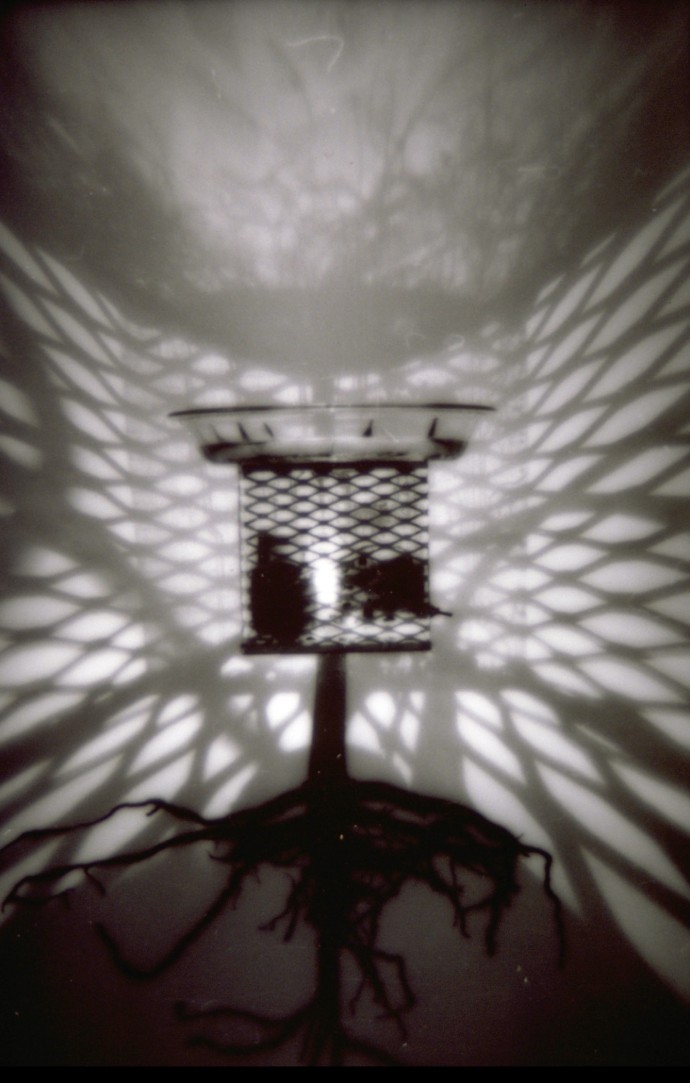As you approach this piece, a passive infrared sensor turns a light on, which projects the worms and tree forms onto the walls and ceiling.
The tubifex worms, the stars of this piece, demonstrate a form of supra organization in which these single individual tubifex worms act together to form a group consciousness of thousands of worms.
The gaggle sends out exploratory tentacles projecting from the edge of undulating masses, which resemble magnified striated muscle cells.
These collective fingers swell over the edge of the plate and back into other writhing gatherings if you touch one worm in a bunch, the whole mass contracts like a flinching muscle.
Scientists have now “discovered” Earthworms form herds and make group decisions. According to research published in the journal Ethology, earthworms use touch to communicate and influence each other’s behavior. By doing so, the worms collectively decide to travel in the same direction as part of a single herd. In April 2010, Ms. Lara Zirbes a Ph.D. student at the University of Liege in Gembloux, Belgium, discovered this behavior. However, science does not look to the art/sciences for precedents given my work was published in 1992.
In this work, five and six clumps will form in a dish like mini sea anemones. When one swarm reacts, the few worms that are invariably touching the other clumps contract, and soon the whole glass plate has exploded with worms heading off in every direction; a kind of primitive escape mode. Soon the worms have collected together again to act as a single creature.
The roots, worms, and circuit boards in this work point to the all-pervasive tree structure as the most efficient matter, energy, and information distribution network.
Tree structures are forms that recur consistently in organic and inorganic systems alike. They may appear as fingers of rivers, cracks in rocks, branches of roots, snowflakes, cytoskeletons, brain cells, clumps of worms, circuit boards, and very large-scale integrated circuits (VLSI) and internet connection networks.
EXHIBITIONS
The Blasthaus San Francisco, California, invited by Will Linn.
Group exhibition
SOMAR Gallery, San Francisco, California. Jan. 1999
THEM Exhibition curated by Gary Brewer. Art about the etymological universe. Displayed a new version of Technology Recaps Phylogeny.
IMAGE DU FUTUR 96, Montreal, Canada. May 1996
Cité des Arts et Des Nouvelles Technologies de Montréal curated by Ginette Major & Herve Fisher.
BLASTHAUS GALLERY, San Francisco, California. Apr. 1995
In No-Sense Defense Exhibition curated by William Linn. Displayed Technology Recaps Phylogeny and CyberSqueeks.
SAN FRANCISCO STATE GALLERY, San Jose, California 1994
Artists Shedding Light on Technology Exhibition curated by Steve Wilson
HOLMES FINE ART GALLERY, San Jose, California. Nov. 1994
Action Experimental Art Exhibition. Tubifex Worm installation and CyberSqueek series.
ANON SALON, San Francisco, California. Aug. 1993
Displayed Technology Recaps Phylogeny
The Exploratorium, YLEM Forum, San Francisco, California. Jul. 1992
SF premiere of work Technology Recapitulates Phylogeny
PUBLICATIONS Technology Recaps Phylogeny installation. YLEM. Displayed Technology Recaps Phylogeny and CyberSqueeks
Art and Electronic Media. by Edward Shanken London: Phaidon Press, 2009, 2011, 2014. 304 pages. ISBN 9780714847825
HARDWARE/TECHNIQUE
Passive infrared sensor, rewired to a small point source of light illuminates in response to human subjects and simultaneously triggers lights to go out.
SHOW DIMENSIONS
Full-size room with no intervening sound or projections. AC 115-220 HZ.
BIOLOGY
The work requires tubifex worms, drinking water. Work should be flushed once per day.
KEYWORDS
living system sculpture, bio art, interactive art, supra-organization, emergent behavior, autonomy
BIBLIOGRAPHY
Leonardo Digital Salon Catalog, Leonardo 31:5 (1998) MIT Press Cambridge. Ken Rinaldo editor and contributor for special project on Artificial Life Art. Contributed articles Technology Recapitulates Phylogeny: Artificial Life Art and an article on The Flock.
TELEVISION & RADIO
The Know Zone, Special On Robotics; Channel 23 & 44.
COLLECTIONS
Christine Sperber MIMI Ferst Gallery 1993



